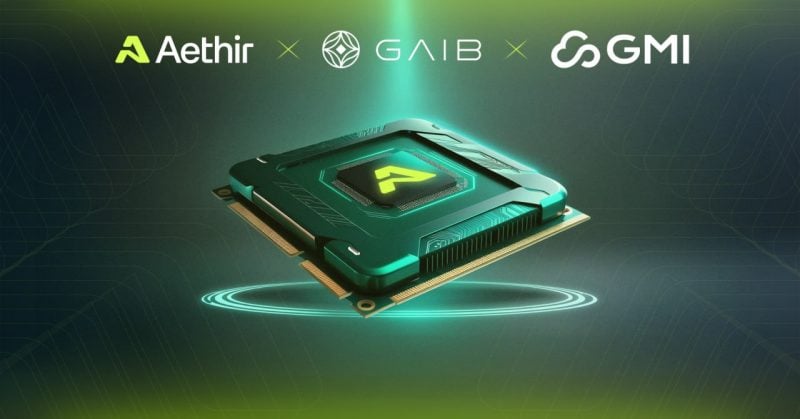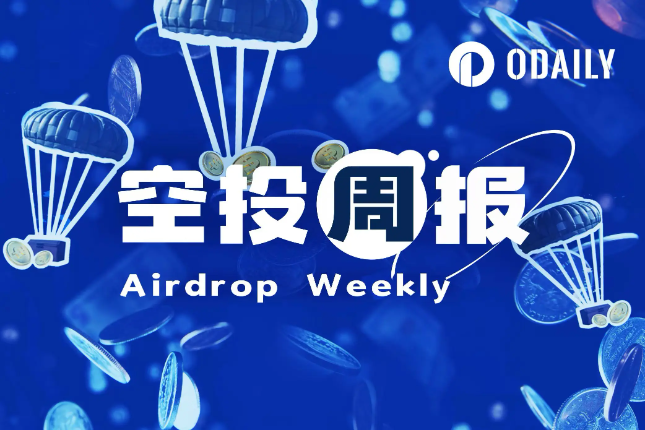Latest DePIN Funding News

6 months ago
Verida Recognized as Finalist in Finder Innovation Awards for Decentralized Data Storage
Verida has been recognized as a finalist in the Digital Assets & Web3 Innovation category of the 2024 Finder Innovation Awards, highlighting its groundbreaking efforts in decentralized data storage. The Finder Innovation Awards aim to honor brands and organizations that enhance user experiences, and Verida's focus on privacy and data protection aligns perfectly with the core values of the cryptocurrency and Web3 sectors. By offering private, encrypted data storage that complies with regulations like GDPR and CCPA, Verida empowers users to manage sensitive information without exposing personally identifiable information on the blockchain.
As artificial intelligence continues to evolve, concerns about the misuse of sensitive user data are growing. Verida addresses these issues by allowing users to withdraw their private data from major online platforms, thereby preventing it from being utilized in AI training models. This innovative approach enables users to create and control their own 'digital twins', ensuring that they can manage what data is shared with AI systems. Furthermore, Verida's global, region-aware design provides users with the flexibility to choose their data storage locations, making it a scalable solution for the Web3 market both locally and internationally.
In addition to its data storage capabilities, Verida has launched the Verida Wallet, the first mobile crypto wallet to incorporate Polygon ID zero-knowledge credentials. This wallet supports multiple networks, including Polygon, Ethereum, and NEAR, allowing users to manage and trade cryptocurrencies and NFTs seamlessly from their mobile devices. With over 80,000 digital identities created across its testnet and mainnet, Verida demonstrates a strong demand for enhanced control over private data in the crypto space. Its commitment to a privacy-first approach in digital wallets positions Verida as a leading innovator in the Web3 landscape.

6 months ago
Aethir Partners with GAIB and GMI Cloud to Enhance AI Development with H200 GPUs
In a significant development for the AI landscape, Aethir has partnered with GAIB and GMI Cloud to integrate H200 Tensor Core GPUs into their decentralized computing platforms. This collaboration aims to democratize access to high-performance GPU resources, making it easier and more cost-effective for developers and businesses worldwide to engage in AI and machine learning. Daniel Wang, CEO of Aethir, emphasized that this integration empowers the next generation of AI developers by providing them with the necessary tools to build, train, and deploy advanced models, regardless of their geographical or financial limitations.
GAIB is introducing an innovative financial model that allows users to invest in GPU-backed assets, thereby generating rewards and yields. Kony, CEO of GAIB, highlighted that this model addresses the challenges associated with investing in illiquid compute assets and lowers the barriers to entry for potential investors. By transforming GPUs into liquid, tradeable yield-bearing assets, GAIB aims to unlock new investment opportunities and enhance market efficiency, ultimately contributing to the growth of the AI economy.
GMI Cloud's role in this partnership focuses on optimizing the integration of the H200 GPUs, ensuring they deliver peak performance. Alex Yeh, founder and CEO of GMI Cloud, stated that their mission is to support humanity's AI ambitions by providing an efficient, on-demand GPU cloud. This collaboration not only enhances computational capabilities for enterprises and developers but also drives innovation in AI applications. The H200 GPUs, built on the Hopper architecture, promise significant improvements in memory, bandwidth, and efficiency, further solidifying the foundation for the AI era. Additionally, Aethir's recent launch of the Aethir Catalyst program, which allocates $100 million to AI and gaming startups, underscores their commitment to fostering innovation in this space.

6 months ago
The Rise of Decentralized Physical Infrastructure Networks in Crypto
Decentralized Physical Infrastructure Network (DePIN) is emerging as a significant trend in the cryptocurrency space, characterized by its integration of blockchain technology with the Internet of Things (IoT). DePIN projects aim to connect and manage physical devices that gather and share data, such as wireless networks and energy grids. However, a critical question arises: to what extent do these projects genuinely utilize blockchain networks? The challenge lies in the sheer volume of data generated by these networks, which necessitates high-throughput blockchain solutions. Notably, Helium, a prominent DePIN project, transitioned from its own blockchain to Solana in April 2023 to leverage its speed, yet even Solana struggles to meet the real-time computational demands of DePIN applications.
Shuyao Kong, co-founder of the upcoming MegaETH, highlights that existing DePIN projects are not entirely on-chain, indicating a reliance on hybrid structures that combine off-chain computations with on-chain data recording. This approach raises concerns about whether these projects are merely using blockchain as a marketing strategy to attract investments. The inefficiencies and costs associated with fully on-chain applications lead many projects to adopt a model where off-chain computations are conducted, and only the results are recorded on-chain. This hybrid model allows for better scalability and performance while still leveraging the trustless nature of blockchain for coordination among numerous devices.
As the DePIN landscape evolves, experts like Zhe Wang and Jeremy Frank suggest that while current blockchain architectures cannot fully support the real-time demands of DePIN projects, there is potential for growth. Future developments may focus on specialized architectures tailored to the unique computational requirements of various DePIN applications. This could lead to the creation of modular execution environments optimized for tasks such as real-time biometric processing or large-scale data management. Ultimately, the success of DePIN will hinge on striking a balance between on-chain and off-chain processes, ensuring both efficiency and reliability in decentralized infrastructure management.

6 months ago
IoTeX Price Predictions: A Promising Future in the Crypto Market
The IoTeX coin, currently priced at $0.03817847, is gaining attention as a potential multibagger in the cryptocurrency market. With the crypto landscape showing signs of bullish evolution in 2024, IoTeX (IOTX) is projected to reach a price high of $0.0760 if the positive sentiment continues. However, if the market fails to adopt the technology widely, the price could drop to a low of $0.030. The platform, which focuses on machine economics, supports a range of devices from smart gadgets to autonomous vehicles, making it a significant player in the Internet of Things (IoT) sector.
Looking ahead to 2025, the price of IOTX could climb to $0.099, contingent on successful network integrations and user adoption. Conversely, if the platform struggles to attract users, the price may fall to $0.042. The forecast for the following years suggests a steady increase, with potential highs reaching $0.356 by 2030. This optimistic outlook is based on the assumption that IoTeX will continue to innovate and enhance its interoperability, which is crucial for its long-term success in the competitive crypto market.
Historically, IoTeX has had a volatile journey since its mainnet launch in 2019, experiencing significant price fluctuations. After an initial surge, the price fell drastically before gradually recovering. The project has shown resilience, and with the growing importance of IoT technologies, investing in IOTX appears to be a promising opportunity for long-term gains. As the market evolves, the performance of IoTeX will be closely monitored by investors looking to capitalize on its potential growth.

6 months ago
CUDOS and ASI Alliance Complete Successful Token and Blockchain Merger
Today marks a significant milestone in the blockchain space as CUDOS and the Artificial Superintelligence (ASI) Alliance have successfully completed their token and blockchain merger. The CUDOS mainnet has officially halted at block height 12,385,627, meaning it will no longer produce blocks. In this process, all data from the final state of CUDOS was exported, and the Fetch.ai (ASI) chain underwent a software upgrade to incorporate all CUDOS data, facilitating the migration of balances. Notably, all CUDOS token holders and delegators have successfully transitioned, along with 30 validators, bringing the total validator count on Fetch.ai’s mainnet to 91.
With the merger finalized, CUDOS holders can now view their new $FET tokens on the Fetch.ai (ASI) mainnet through platforms like Mintscan. To verify the correct amount in their vesting schedule, users can check an active CUDOS explorer, where their $FET balance should reflect the amount divided by 118.344. For further assistance or inquiries, stakeholders are encouraged to reach out through the official channels of CUDOS or ASI, including their respective Discord servers, especially for questions related to the merger and balance conversions.
The collaboration between CUDOS and the ASI Alliance has been ongoing, and this merger paves the way for numerous exciting updates that are set to be announced soon. Both teams are committed to keeping the community informed, so stakeholders should stay tuned for upcoming developments as they continue to enhance their offerings in the blockchain ecosystem.

6 months ago
The Challenges and Future of DePIN in Blockchain Technology
Decentralized Physical Infrastructure Network (DePIN) is emerging as a significant narrative in the blockchain space, often described as the "Internet of Things (IoT) with a blockchain twist." These projects aim to connect and manage physical devices, such as energy grids and wireless networks, which generate vast amounts of data. However, the current blockchain infrastructure struggles to keep pace with the demands of DePIN applications. For instance, Helium, a notable DePIN project, transitioned from its own blockchain to Solana in April 2023, yet even Solana's high throughput capabilities are insufficient for real-time computations required by many DePIN projects.
The reliance on offchain computation is a common theme among DePIN projects. As Shuyao Kong, co-founder of MegaETH, points out, existing DePIN applications are not fully onchain due to inefficiencies and costs. While some projects may use blockchain as a marketing strategy, the reality is that they often utilize a hybrid approach, processing computations offchain and recording results onchain. This is particularly critical for executor devices, which require immediate responses, unlike sensors that can tolerate some latency. The use of blockchain in DePIN primarily serves to coordinate activities among numerous devices in a trustless manner, adding a financial incentive layer through token rewards for contributors.
Looking ahead, the future of DePIN projects will likely involve a balance between onchain and offchain processes. Current blockchain architectures are not equipped to handle the real-time demands of DePIN applications fully. However, as scalability improves, we may see an increase in onchain functionalities. Experts suggest that future DePIN projects will evolve towards modular architectures tailored for specific computational needs, such as real-time processing or large-scale data storage. This evolution is essential for the successful integration of blockchain technology into the DePIN ecosystem, ensuring that it meets the diverse requirements of various applications.

6 months ago
$LIFEDOG: A New Era for Meme Coins on Ethereum
On October 28th, 2024, the new Ethereum-based meme coin, $LIFEDOG, has officially launched on Uniswap, providing an innovative staking and reward ecosystem for meme coin enthusiasts. This project aims to differentiate itself in the saturated crypto market by leveraging the experiences of previous meme coins and a skilled blockchain team. $LIFEDOG allows users to purchase tokens using Ether (ETH) and offers unique staking options that enable holders to earn potential returns by staking $LIFEDOG alone or in combination with other inactive meme coins, marking a fresh approach in the meme coin landscape.
Reflecting on the evolution of dog-themed cryptocurrencies, $LIFEDOG emerges a decade after Dogecoin's debut, which has inspired a plethora of similar assets like Shiba Inu and FLOKI. The development team behind $LIFEDOG intends to learn from the market's historical cycles, aiming to create a stable and rewarding ecosystem for its users. The project features a two-tiered staking program: staking $LIFEDOG alone offers an annual percentage rate (APR) of 320%, while pairing it with legacy meme coins boosts the APR to 555%. This model is designed to enhance liquidity and profit opportunities for participants, with 75% of the total $LIFEDOG supply allocated for decentralized exchange liquidity.
As the $LIFEDOG project approaches its full-scale launch, it has set a maximum supply cap of 5,555,555,555 tokens to ensure accessibility for meme coin holders. Additionally, 4% of the token supply is earmarked for charitable contributions to dog welfare initiatives, reflecting the community's commitment to animal care. With its ambitious goals and innovative features, $LIFEDOG positions itself as a potential leader in the meme coin market, promising to revive interest and engagement among crypto enthusiasts and skeptics alike.

6 months ago
Phantom Wallet Faces Downtime Amid GRASS Token Airdrop Surge
On October 28, the Phantom wallet provider experienced significant downtime lasting nearly three hours, coinciding with a surge in demand for the GRASS token airdrop. Users reported issues such as missing balances and transaction failures on social media platforms. The downtime began at 1:36 PM UTC and was resolved by 4:20 PM UTC, marking the second service interruption for Phantom within the month. Earlier in October, a brief 8-minute outage was recorded on the 3rd. In response to the incident, Phantom's team assured users that they would actively monitor the situation and implement measures to prevent future occurrences.
The GRASS tokens are part of a decentralized physical infrastructure network known as Grass, which operates on the Solana blockchain. This network incentivizes users by rewarding them for lending unused internet bandwidth, which is then utilized to enhance artificial intelligence models. The first airdrop of GRASS tokens will distribute 100 million tokens, accounting for 10% of the total supply. Following the airdrop's launch, the price of GRASS experienced volatility, initially dropping by 28% to $0.65 before recovering slightly to $0.71 at the time of reporting.
Despite the issues faced by Phantom, the Solana network itself remained fully operational throughout the downtime. Data from Solana Status indicated that the network maintained total uptime over the past 90 days. The timing of Phantom's service disruption, just minutes after the GRASS token claim went live, has led to speculation about a correlation between the two events, as users rushed to claim their rewards. This incident highlights the challenges faced by wallet providers during high-demand events in the cryptocurrency space.

6 months ago
Upcoming Airdrops and Funding Rounds in Blockchain Projects
In the latest developments in the blockchain space, several projects have announced airdrops and funding rounds that are set to take place from October 21 to October 27. One of the highlights is Ethereum L2 Scroll, which has opened its first airdrop application, allocating 7% of its total SCR supply. This airdrop targets community participants, ecosystem projects, industry contributors, and global community organizers. Scroll has successfully raised over $80 million in funding through various rounds, with significant contributions from Polychain and Bain Capital Crypto, among others.
Another noteworthy project is Grass, a Depin initiative on Solana that integrates AI technology. Grass has announced its Airdrop One, distributing 100 million GRASS tokens, representing 10% of its total supply. The allocation is designed to reward users who have earned Grass points and those who hold specific NFTs. Grass has raised over $4.5 million in funding, with its latest round led by Polychain Capital. The airdrop applications for Grass will open on October 28, 2024, creating excitement among its user base.
Additionally, Kelp DAO, a re-staking protocol based on EigenLayer, has opened airdrop applications for SCR tokens. The project raised $9 million in a private funding round earlier this year. Jupiter, a DEX aggregator, has also launched its Active Staking Rewards, distributing JUP and CLOUD tokens to active voters. The airdrop landscape is further enriched by projects like ALIENX and Ordzaar, which are also rolling out their airdrop initiatives. As these projects continue to innovate and engage their communities, the upcoming weeks promise to be significant for blockchain enthusiasts and investors alike.

6 months ago
Emerging Blockchain Solutions: Qubetics Joins Established Giants
The blockchain domain is ever-evolving, with established giants and innovative newcomers competing to deliver scalable, secure, and efficient solutions. In this competitive space, networks like Monero, Bittensor, and Tezos have each carved unique positions, addressing specific challenges and enhancing blockchain utility. A fresh contender, the Qubetics $TICS, has recently entered the arena, offering an ambitious vision of interoperable and autonomous blockchain. Here’s a look at what sets these networks apart and why they could be poised for major growth.
Qubetics’ standout offerings include QubeQode IDE, a development environment with drag-and-drop capabilities that make creating blockchain apps easy, even for users with limited coding skills. This integrated development environment reflects Qubetics’ commitment to lowering barriers in blockchain development. The network also leverages AI-driven tools to streamline the coding and deployment process, allowing developers to build applications quickly and efficiently. In Phase 5 of its presale, Qubetics has raised over $1.4 million, with $TICS tokens priced at an attractive $0.015972. Over 140 million tokens have already been sold, and with prices rising 10% in the next phase, early investors have a narrow window to join this revolutionary project.
Each of these projects—Monero, Bittensor, Tezos, and Qubetics—addresses unique aspects of blockchain functionality. Monero remains a leader in privacy-focused transactions, Bittensor decentralizes AI development, and Tezos is a resilient, self-amending blockchain. However, Qubetics’ focus on blockchain development places it at the forefront of a new wave of blockchain solutions. As blockchain technology advances, these platforms collectively contribute to a future rich with possibilities for decentralized applications and digital assets. Qubetics, in particular, offers a rare chance for early investment with life-changing potential.
Signup for latest DePIN news and updates